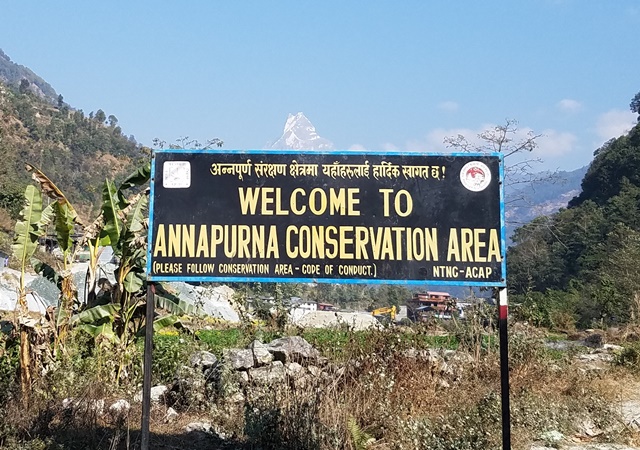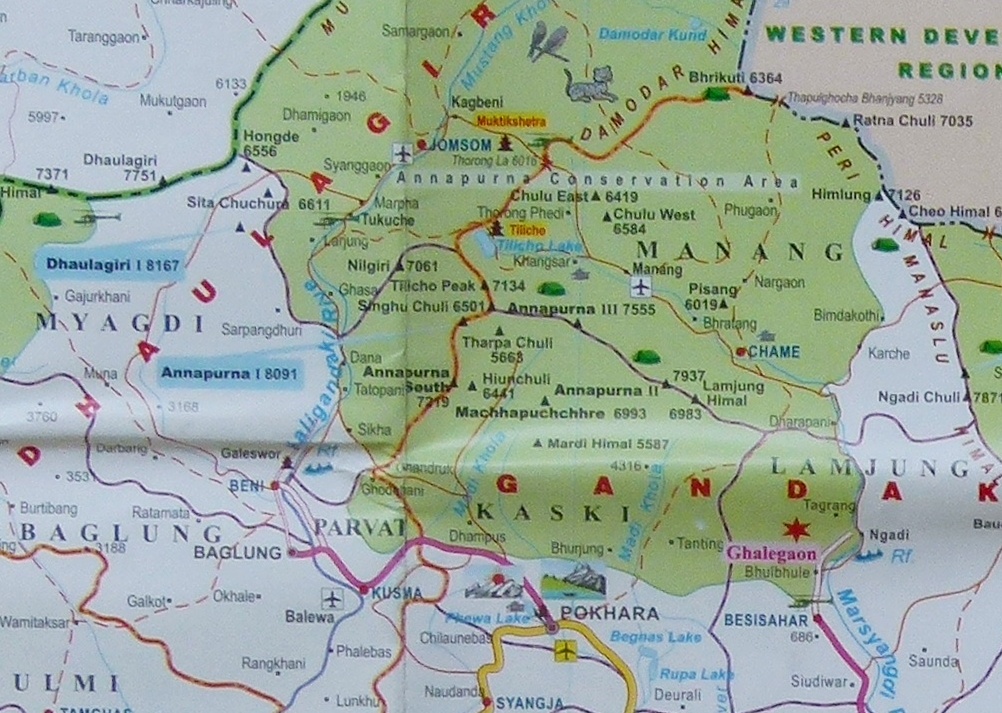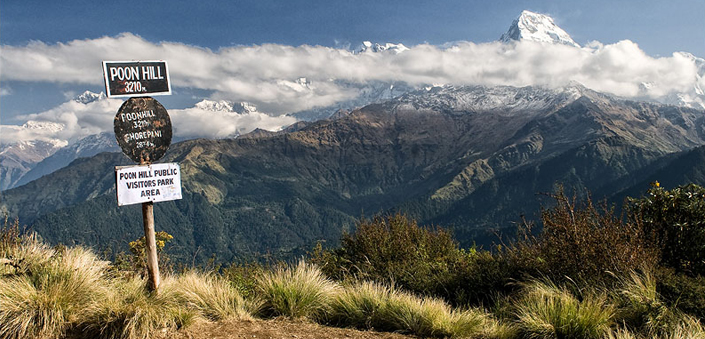

Goal"To achieve sustained balance between nature conservation and socio-economic improvement in the Annapurna Conservation Area (ACA) thereby assist National Trust for Nature Conservation in achieving its goal."
Objectives
Annapurna Conservation Area Nepal is the most famous trekking destination of Nepal. Annapurna Conservation Area (ACA) is the largest protected conservation area in Nepal. It is conservation area with sustainable use of natural resources in Nepal. Annapurna Conservation Area Nepal is one of the most famous place for trekking. Thousands of visitors come in Nepal for Annapurna Conservation Area Trekking.
Launched in 1986, the Annapurna Conservation Area Project (ACAP) is the largest undertaking of NTNC and also the first Conservation Area and largest protected area in Nepal. It covers an area of 7,629 sq. km. and is home to over 100,000 residents of different cultural and linguistic groups. ACAP is rich in biodiversity and is a treasure house for 1,226 species of flowering plants, 102 mammals, 474 birds, 39 reptiles and 22 amphibians.
There are several features that make the Annapurna region a unique place in the world. It contains world’s deepest river gorge - Kali Gandaki Gorge, which is 3 miles long and 1.5 miles wide, a valley with fossils from the Tethys Sea dating 60 million years ago. The region contains world’s largest rhododendron forest in Ghorepani. Tilicho lake, located in Manang – north of Annapurna massif, is the world’s highest altitude fresh water lake.

The biological diversity of the Annapurna region is equally rivaled by cultural diversity. Gurung and Magar are the dominant groups in the south, whereas Thakali, Manange and Loba are dominant in the north. Each of these groups speaks their own dialect, and have unique cultures and traditions. Besides, there are also Brahmin, Chhetri and other occupational castes although in comparatively smaller numbers. Hindu, Buddhist and pre-Buddhist religions along with a mixture of all these are prevalent across the region. The local people reside in the 5 districts of the 57 Village Development Committees (VDCs) of the Annapurna Conservation Area (ACA).
The natural and cultural features of ACA have made it the most popular trekking destination in the country, drawing more than 60 percent of the country’s total trekkers. Tourism, over the years, has been firmly established as one of the most important and competitive sectors of the local economy. There are over 1,000 lodges, teashops and hundreds of other subsidiary services to cater to the thousands of trekkers, pilgrims and their support staff.
The soaring number of visitors, whose fuel wood consumption is twice more than that of the local people, has exerted immense pressure on forest resources already stressed from the growing local population. Similarly, litter, particularly the wastes produced by trekkers and hoteliers, is another major concern. It is estimated that an average trekking group of 15 people generates about 15 kgs. of non-biodegradable and non-burnable garbage in 10 days trek, producing tons of garbage in mountain regions annually.
The multifaceted problems of ACA have been addressed through an integrated, community based conservation and development approach, an experimental model which has been in the vanguard of promoting the concepts of “Conservation Area” through an “Integrated Conservation and Development Programme” approach in the country and abroad. ACAP was first tested as a pilot Program in the Ghandruk
Village Development Committee (VDC) in 1986. After being notified in the Gazette as a “Conservation Area” in 1992, ACAP’s program covered the entire area.
Additionally, ACA is the first protected area that has allowed local resident to live within the boundaries as well as own their private property and maintain their traditional rights and access to the use of natural resources. It is also the first protected area, which has refrained from using army assistance to protect the dwindling natural resource base on which the region depends. Instead, it invests whatever financial resources available for community development and social capital building in the region. NTNC receives no regular funding support from the government for the operation of ACAP, but has been granted the right to collect entry fees from visiting trekkers. One hundred percent of the revenue is ploughed back to implement conservation and development activities in ACA. Additional funds are raised from national and international donors. This is an exemplary achievement of a Non-Government Institution ability to manage a significant portion of the protected area system in Nepal.
In order to manage ACA more effectively, it has been divided into 7 unit conservation
offices - Jomsom, Manang and Lo-Manthang in the trans-Himalayan region and Bhujung, Sikles, Ghandruk, and Lwang on the southern flank of the Annapurna range. The focus of Jomsom, Manang and Ghandruk, which are among the most popular trekking destinations, is on integrated tourism management and other development activities that benefit the local communities and the environment. The
Program priorities for Bhujung, Sikles and Lwang are poverty alleviation and integrated agriculture development and agro-forestry. Similarly, while the focus in upper Mustang, which came under the jurisdiction of ACA in 1992, has been on managing controlled tourism on a sustainable basis, and promoting heritage conservation which is the major tourist attraction. The Conservation Education and
Extension Program is being implemented in the entire region of ACA and forms the backbone of all its endeavors.
The first management mandate given by the Government to NTNC to manage ACA ended in 2002. The Government has given another management mandate of additional 10 years to the Trust. NTNC believes that areas such as the ACA will ultimately have to be managed by the local people themselves in perpetuity. Therefore, the focus is on building local capacity, both at the institutional and individual levels, to meet all the conservation and development aspirations of the people.
Entry Fee (Per Person) to visit Annapurna Conservation Area (ACA):
Park entry permit must be obtained to enter Annapurna Conservation Area.
Per person per entry:
For Foreigners : Nepali Rupees 3,000 (About US dollor thirty)
For SAARC Countries : Nepali Rupees 1,000 (About US dollar Ten)
For Nepali: Nepali Ruppes 100 (About US dollar One)

The follwing details should be provided to obtain Annapurna Conservation Area Permit:
1. Passport Size Photograph
2. Persoanl Details
FIRST NAME:
MIDDLE NAME:
Family Name:
Passport No :
Gender:
Date of Birth:
.jpeg)